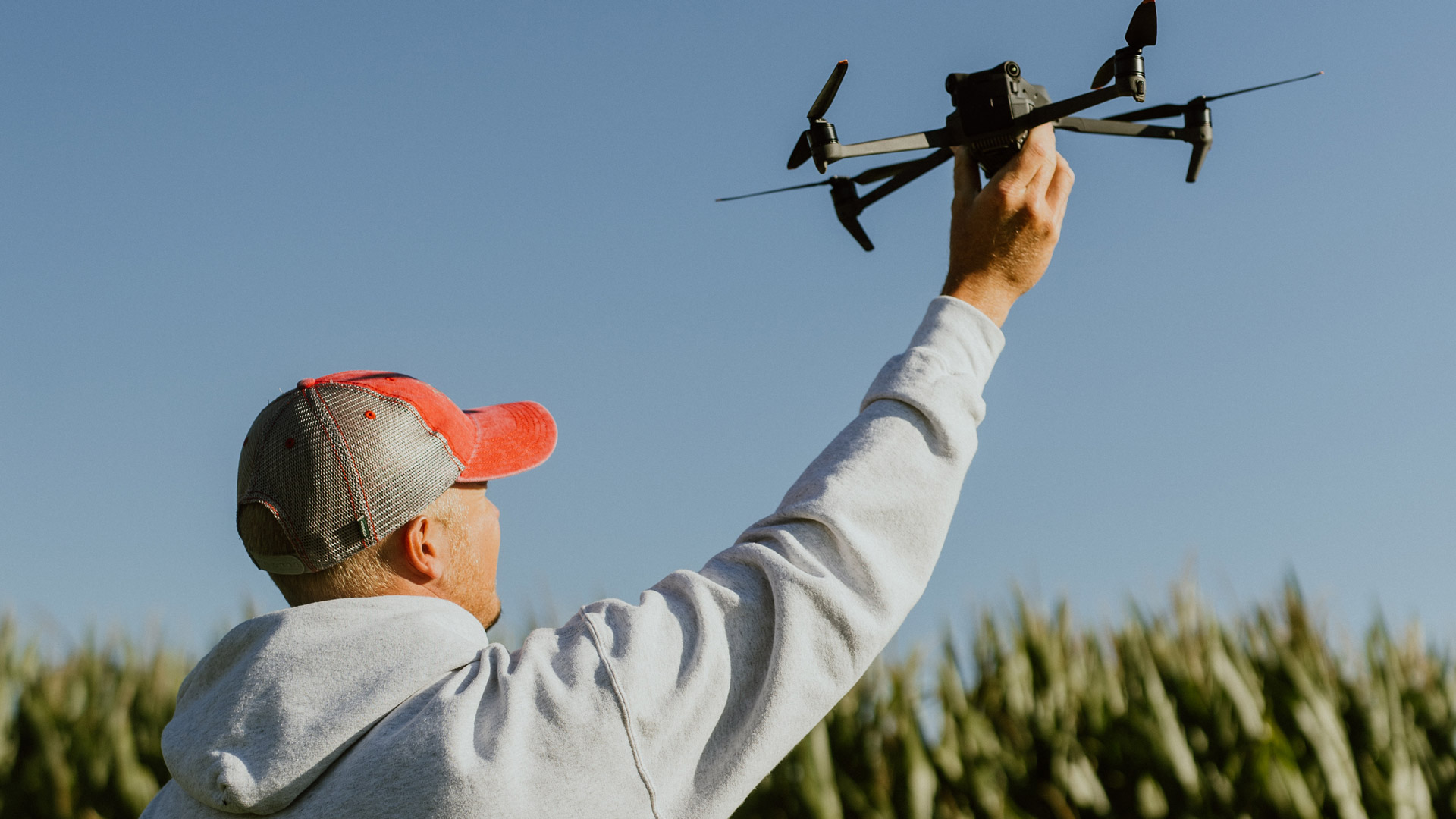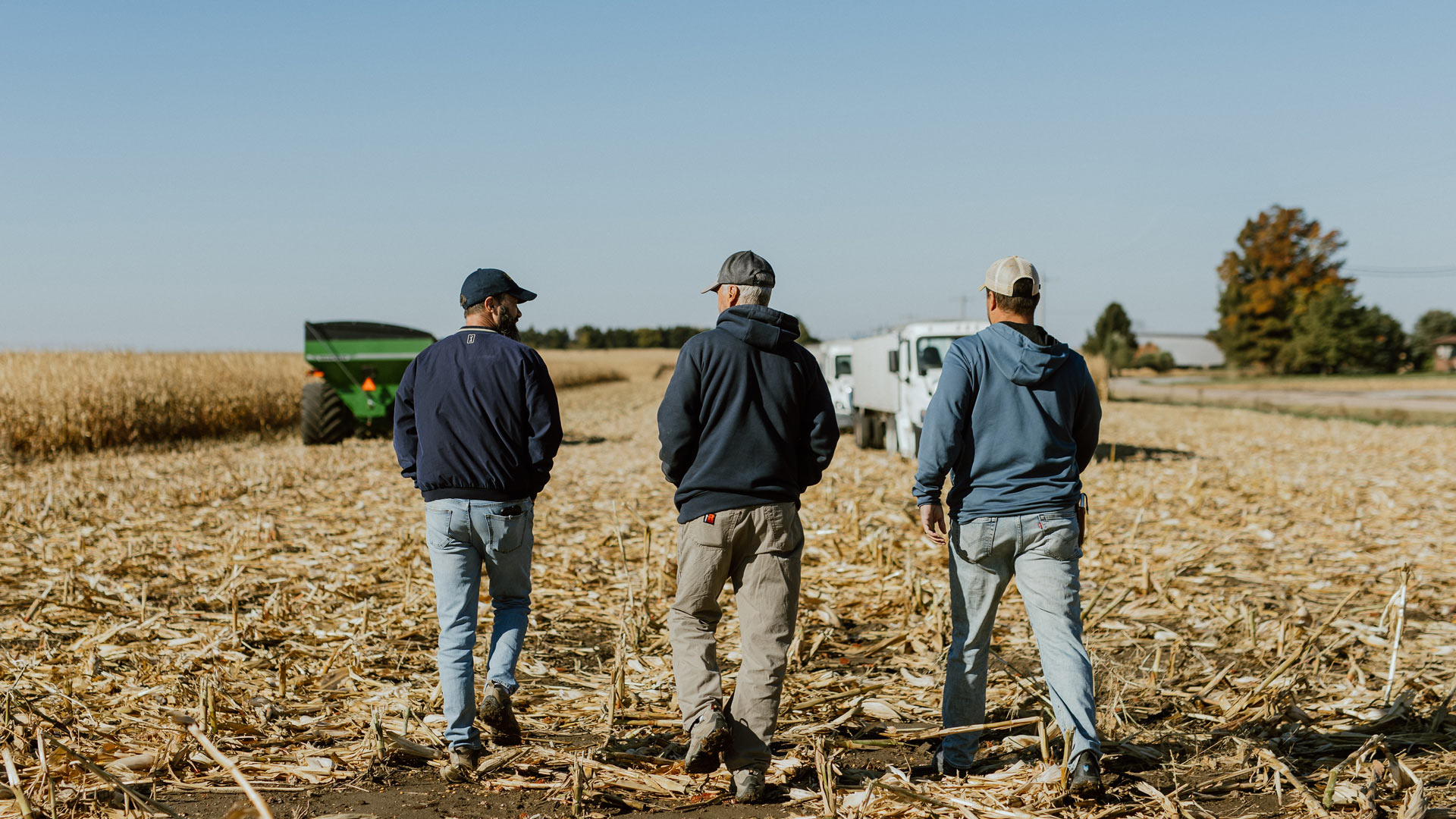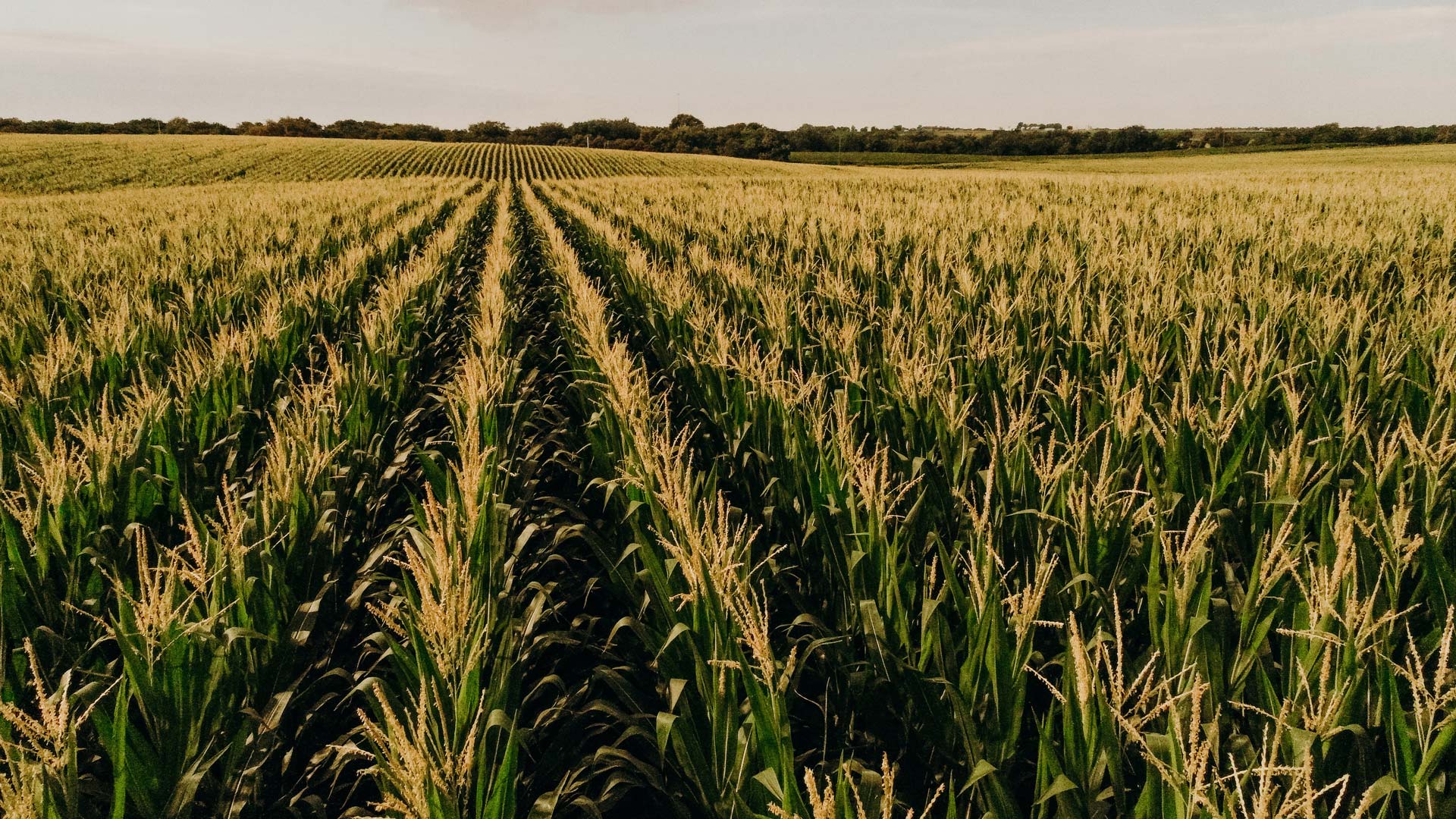Corn harvest is a busy time in Nebraska. Combines roll up and down the fields, emptying load after load of golden kernels into a waiting truck or grain cart. Then, the freshly harvested kernels are driven away to their destination. With all that activity, you might wonder where all that corn is going. As it turns out, corn is such a versatile crop that those kernels may be going to lots of different places. Harvesting corn is just the start of the journey.
To find out more about where corn goes when it leaves the field, we talked to Nebraska corn farmer Brandon Hunnicutt. His family has grown several types of corn over the years, including field corn, white corn and even popcorn.
How Farmers Decide What Kind of Corn to Plant
Hunnicutt and his family decide which type of corn they will grow several months before planting. The biggest determining factor is what the family thinks the price, or market, will be for a particular type of corn after it’s harvested. Sometimes, they’re able to sign a contract ahead of time to deliver a variety of corn to a buyer at harvest for a particular price.
This decision on what to plant must be made months in advance to give Hunnicutt time to order seed corn and other supplies the family will need to grow a particular variety of corn.
Types of corn grown in Nebraska and how they’re used:
- Field corn: Also called yellow corn or dent corn, field corn is by far the most plentiful type of corn grown in the state. It is often used to make livestock feed, ethanol and corn byproducts created during the ethanol-making process, such as high-quality livestock feed ingredients. However, field corn uses also include foods for human consumption and consumer products like bioplastics and adhesives.
- Sweet corn: The corn you buy in grocery stores is sweet corn. It’s the type of corn eaten fresh off the cob, canned and frozen.
- White corn: White corn is used for many food products such as snack chips, tortillas or grits.
- Popcorn: A delicious snack, that is enjoyed around the world.
How Farmers Harvest Corn
How is corn harvested? It’s done with specialized equipment called a combine, which is driven up and down the rows to cut the cornstalks and separate kernels from the rest of the corn plant. The kernels are funneled into a storage compartment in the combine, and the rest of the plant goes out the back of the combine and back onto the field. Corn farmers often leave the leftover pieces of plant behind after harvest to help improve soil health.
Where Corn Goes Directly After Harvest
Much of the Hunnicutt family’s field corn is taken from the fields to storage at the family’s farm or is sold at one of several local grain cooperatives, often called grain elevators, which act as grain distribution centers. Grain elevator operators buy corn from farmers and then sell and ship the corn to other buyers.
Storing the grain on the family’s property allows them to explore different markets later and sell it when they think the price will be the best. However, they typically don’t have the bin space for their entire crop, so some must be sold directly after harvest —usually to a grain elevator, or co-op. Some white corn also can be sold to a local processor.
How Farmers Decide Where to Sell Corn
In Hunnicutt’s case, he has many options when it comes to where he sells his corn. Several grain elevators are located within a 30-minute or 40-minute drive, which means he can shop around for a good selling price. Corn can be sold to several elevators, depending on the price or how close the facility is to the field. Which facility they sell to can change each year.
The Hunnicutt family’s field corn often ends up at one of Nebraska’s many ethanol plants, which makes sense considering Nebraska is one of the leading producers of ethanol in the country. However, it doesn’t usually go to an ethanol plant right away after harvest.
“Usually, we’re not going straight to the ethanol plant, and some of that is just a factor of what the price is,” he said. “If we’re looking at the price of what the elevator’s paying versus the ethanol plant at harvest time, it might make more sense to just take it to the elevator from a dollars and cents perspective.”
Like grain elevators and corn processing plants, an ethanol plant establishes a bid, or a price, it’s willing to pay for corn at any given time. Farmers evaluate those bids to find the best price for their corn.
Why Do Farmers Store Corn?
By storing a significant portion of their corn crop in their own 40,000-bushel bins, the Hunnicutt family can wait weeks or months for the price to increase. Then, they’ll sell it to the customer willing to pay the higher price. Or, they can agree in advance to sell corn to a buyer at a specific time for a specific price. They can’t wait too long to sell the corn, though, or they won’t have space in the bins to store next year’s harvest.
Hunnicutt uses the price of corn on the Chicago Board of Trade as a baseline for evaluating bids throughout the year. If the potential buyer has a lot of corn or has contracts with farmers to receive a lot of corn in a particular month, they’ll offer less money for corn during that month. If a potential buyer is short on corn or thinks they’ll need more corn in a particular month, they’ll offer a price higher than the Board of Trade to entice farmers to sell them corn at that time.
“It could be, who’s taking the least amount of money away from the Chicago Board of Trade price, or who’s giving us more money,” Hunnicutt explained.
Some corn farmers also deliver their corn directly to cattlemen, who include it in the rations they feed their cattle. However, there aren’t many large-scale cattle producers in Hunnicutt’s area, so he doesn’t haul to livestock producers. His family also doesn’t raise cattle themselves, so they don’t use any of their own corn as livestock feed.
How Is Corn Transported After Harvest?
How is corn moved from the fields to its final destination? The Hunnicutts empty their combines into their own semi-trailer rigs, which haul corn out of the fields. It’s essential the trucks haul the freshly harvested corn to its destination fast, empty the corn into a storage bin or deliver it to the buyer, and then return to the field for another load.
Transportation speed also plays a factor in harvest decisions. As soon as Hunnicutt and other farmers determine their corn is ready for harvest, usually in September, it’s important to get the crop safely harvested, stored or sold before the crop is damaged or bad weather affects the ability to collect the crop. For that reason, where the harvested corn goes after it leaves the field depends on the fastest option, Hunnicutt said.
“We want to get that crop harvested as quickly as possible,” Hunnicutt explained. “So, we look into what makes the most sense to get it away from that field and get those trucks back as quickly as possible.”
Where Does the Corn End Up?
Hunnicutt usually has a general idea of what his corn will be used for, but he doesn’t always know where it ends up. For example, if he is unloading corn at a grain elevator and notices the company’s staff are loading grain onto a train at the same time, he can guess that his corn might be on that train, but that’s about it.
“It could be going to Texas. It could be going to Mexico. It could be going to the Pacific Northwest,” he said. “Maybe they’re loading it on a train and taking it to a feedlot somewhere. We don’t know. It could be we’re loading it, we’re dumping it and then, when they pick it up, they’re running it to the ethanol plant.”
Hunnicutt sometimes has a clearer understanding of his corn’s final destination when it comes to white corn or popcorn as it’s not as widely grown. With white corn, the staff at the facility involved in the processing of corn can often provide more detailed information about where the byproducts of corn it creates will be going.
“We still don’t know exactly where our corn went,” he said. “[But], they might put it in 50-pound bags [to send] to little mom-and-pop shops in California.”
With popcorn, he doesn’t know where it is going, but he might know what it is used for. Certain varieties are used as movie popcorn while other varieties are used to make caramel corn.
“But, even then, we don’t know if that’s a movie theater overseas or if it’s a movie theater in the States,” he said.
Though Hunnicutt doesn’t know precisely where his corn will end up, he knows the versatile crop that his family grows will be used for food, fuel or for products that make our lives better.




